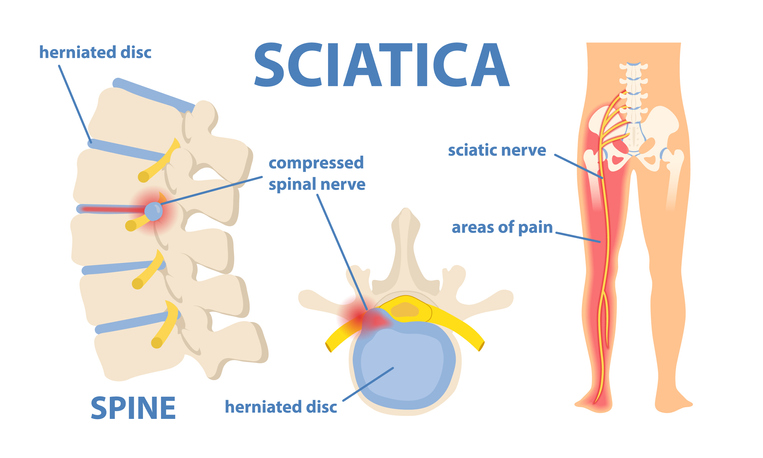Pain
Types of Sciatica
Source: Spine-health, Healthline, National Center for Biotechnology Information: U.S. National Library of Medicine: National Institutes of Health

201 people found this helpful
Print
Share
Save
What is sciatica?
Sciatica, or sciatic nerve pain, refers to pain that occurs when the sciatic nerve root in the lower back becomes compressed, irritated or inflamed. Sciatic nerve pain radiates from the lower back, into the buttocks, and down the legs. It is most commonly the result of a herniated or slipped disc, bone spurs, or spinal stenosis.
Types of sciatica
The type of sciatica is dependent upon one or both legs being affected and the duration of symptoms. Sciatica types include acute, chronic, alternating, bilateral and wallet.
- Acute sciatica includes a recent onset with a pain duration of four to eight weeks or fewer. It does not typically require medical attention and is oftentimes responsive to at-home treatment plans.
- Chronic sciatica lasts longer than eight weeks and includes persistent pain. At-home treatments may not provide relief. A health care professional should be consulted to determine the best treatment option.
- Alternating sciatica involves both legs being impacted alternately. Although this type of sciatica is rare, it may be the result of degeneration of sacroiliac joints.
- Bilateral sciatica occurs in both legs at the same time. This is extremely rare and may be the result of a degenerative change in the vertebrae or disc.
- Wallet sciatica is a nonmedical term used to describe sciatica that occurs due to a wallet in the back pocket placing pressure on the sciatic nerve when sitting. This can be helped by moving the wallet to a front pocket or jacket pocket. Removing unnecessary items from the wallet is also beneficial.


















